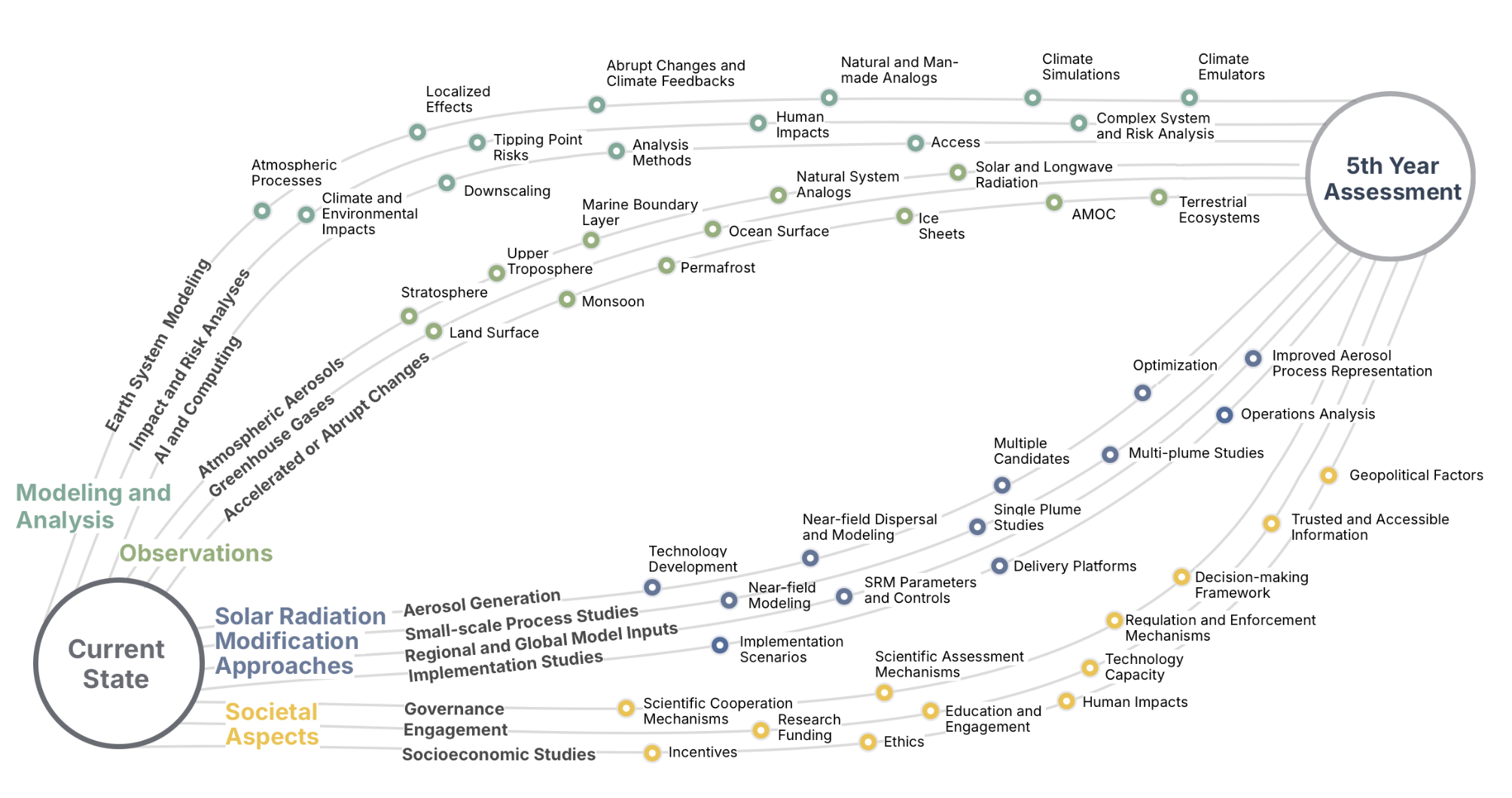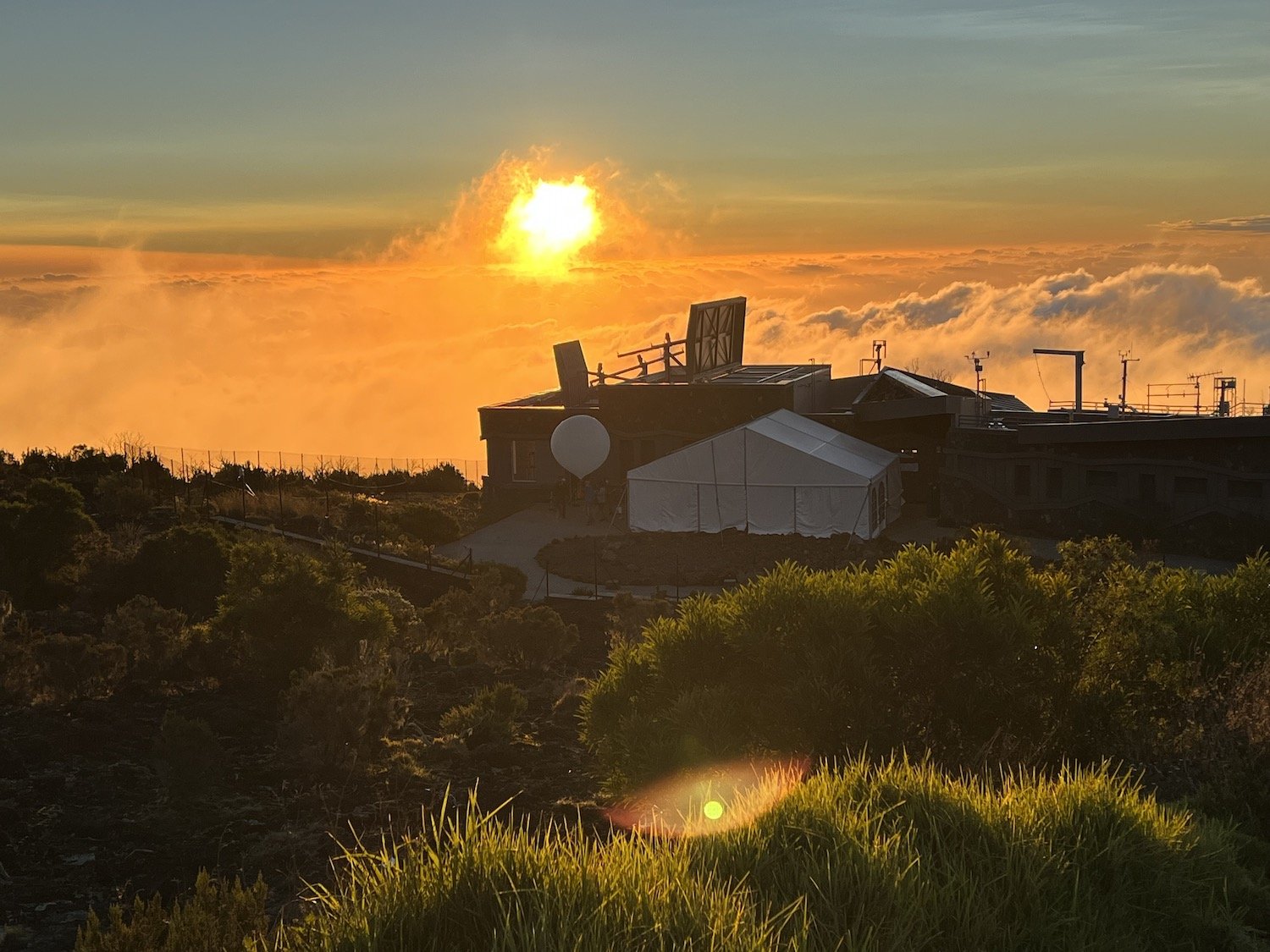Rapid Response Campaign for Observations of Tonga Volcano Emissions
Credits: NOAA, Universite de La Reunion
The recent eruption of the Hunga volcano in Tonga is a rare volcanic event in which material was projected high into the atmosphere in a way that serves as a natural experiment for understanding the primary processes and effects of material released into the upper atmosphere (the stratosphere).
Some aspects of volcanic emissions can be observed from space, but there are important gaps in the ability of space-based instruments to observe and measure the composition of the volcanic plume and its evolution and dispersion in the atmosphere. Observations taken from within the atmosphere (“in-situ”) of the material emitted by the Tonga volcano are likely to help improve understanding of the effects of material introduced into the atmosphere not just by volcanoes, but also by aircraft traffic and rocket launches or with intentional interventions to reduce warming of climate.
The Earth Systems Research Laboratories (ESRL) of the National Oceanic and Atmospheric Administration (NOAA) have developed instruments for taking such in-situ measurements, and, as part of a broader volcanic response plan with NASA, developed approaches to measuring volcanic events like this one. Such observations are also part of the scientific mission of NOAA’s Earth’s Radiation Budget Program and the international Network for the Detection of Atmospheric Composition Change (NDACC) research collaboration to understand the influence of particles (aerosols) on the atmosphere and climate
The NOAA-led Tonga Rapid Response Experiment (TR2X) entails senior scientists releasing specialized balloons carrying sophisticated instruments for measuring gasses and particles to provide observations of the evolution of the volcanic plume in both the stratosphere and the lower atmosphere. The balloons were launched and observations made from Maido Observatory on Reunion Island, which is in the path of the volcanic plume and includes an NDACC research station operated by the University of Reunion, which was located favorably downwind of the plume.
Credits: NOAA
Due to both geography and the specialized resources required, it is rare to be able to sample in situ a volcanic plume in its early stages (i.e., within days or weeks) even though this is extremely important to being able to understand its early evolution and simulate its effects.
There are currently some limitations to the public programs in place to respond rapidly to observe volcanic plumes. In its work to accelerate research related to near-term climate risk and responses, non-profit organization SilverLining collaborated with scientists at NOAA, University of Houston, Universite de La Reunion, and elsewhere to mobilize the effort and support senior scientists and specialized equipment from outside the government in the NOAA-led campaign.
“We are very grateful that SilverLining, with generous support from the Gordon and Betty Moore Foundation, Grantham Foundation and Schmidt Futures could support collaborators in NOAA’s effort to capture information, for the world, on a rare natural experiment of importance to key questions in atmospheric and climate sciences,” states Alex Wong, Research Director of SilverLining, “the value of investment in understanding of Earth’s atmosphere is enormously high.”
The possibility of additional efforts to study the evolution of this substantial release into the atmosphere from balloons and/or aircraft is currently under evaluation.
The Hunga Tonga volcano response effort is part of SilverLining's Safe Climate Research Initiative. Learn more about these efforts here.
Collaborators:
David Fahey, Director, NOAA Chemical Sciences Laboratory; Co-Chair, Scientific Assessment Panel of the Montreal Protocol on Substances that Deplete the Ozone Layer
Troy Thornberry, Research Scientist. Atmospheric Composition & Chemical Processes, NOAA Chemical Sciences Laboratory
Karen Rosenlof, Senior Scientist for Climate and Climate Change. Chemistry & Climate Processes, NOAA Chemical Sciences Laboratory
RuShan Gao, Research Physicist, NOAA Earth Systems Research Laboratory
*Elizabeth (Lizzy) Asher. Research Scientist II. Atmospheric Composition & Chemical Processes, NOAA Chemical Sciences Laboratory
*Sergio L Alvarez, Researcher III, Department of Earth and Atmospheric Sciences, University of Houston
*Paul Walter, Associate Professor, St. Edward’s University, Austin
James H Flynn, Assistant Professor, Department of Earth and Atmospheric Sciences, University of Houston
*Stephanie Evans, Researcher, CNRS - Centre National de la Recherche Scientifique) based on Reunion Island
*Jerome Brioude, Professor, Université de La Réunion
Paul Newman, Chief Scientist for Earth Sciences, Goddard Space Flight Center
Sarah Doherty, Associate Professor and Atmospheric Scientist, University of Washington
Alex Wong, Research Director, SilverLining
*Conducted research on site at Reunion Island





